
The Minoan epoch
In 2000 BC the characteristic Cycladic culture (3rd millennium BC) came to an end and the Minoans achieved the dominance in the Aegean. Accordingly, in the Cyclades the following epoch, the Middle Bronze age, is called Minoan epoch (2,000 – 1,550 BC). This is justified, as Crete developed into an important power in this epoch and clearly influenced at least the closer Aegean islands, while at the same time the Cyclades lost much of their importance. On Naxos, little is known about the Minoan epoch; so far hardly any excavations have been made that date to this period.
The contacts between the Cyclades and Crete before the Minoan epoch
Already during the Neolithic age the Cyclades and Crete were in contact: for example all Stone age sites on Crete show obsidian from Milos. In the later Neolithic era some pottery from the Cycladic islands, including Naxos, appears on Crete. It is interesting to note that even though a number of Cycladic artifacts from this period were found on Crete, no Cretan artifacts appear in the Cyclades. In the Early Bronze age (“Cycladic culture”) this tendency is even stronger: Especially in Northern Crete numerous cycladic (sometimes naxian) artefacts show up, which include pottery, stone vessels and idols. In addition to these direct imports an increasing production of artefacts in Cycladic style can be detected in Crete. This shows that the Early Bronze age Cycladic culture had a strong influence on the Early Minoan culture in Crete. In two settlements in northern Crete (Archanés and Ágios Fokás) dating from the late Early Bronze age the Cycladic artefacts are so prevalent that many researchers believe they were Cycladic colonies. In contrast to this obvious fertilization of the Early Minoan culture by the Cycladic culture almost no Cretan artefacts from this time are found in the Cyclades.The Minoan epoch
During the subsequent Middle Bronze age, Cycladic exports to Crete decreased rapidly until they completely stopped during the Middle phase of the Minoan epoch, reviving a bit during the Late phase. However, Minoan imports appear now increasingly in the Cyclades, predominantly in the western and southern islands (eg. Santorini, Milos, Kea), while Naxos was less affected by this influence. In Crete the Minoan culture quickly developed during this time and soon reached a much higher level than the Early Bronze age Cycladic culture. Richly equipped palaces and large urban complexes with multi-storey houses were built, which show a remarkably high organization with water supply and sewage system, streets etc., as well as a unique art with fine pottery, high-quality metal jewellery and wonderful murals. The high level of the Minoan society is also illustrated by the development of the first European script (Linear A). The society was strongly differentiated with a rich aristocracy and specialized workers, who often lived in different districts, separated by profession. The population density on Crete was very high and the whole island must have been intensively farmed. Imported goods from Crete show up especially in Egypt but also elsewhere in the Mediterranean, and the extensive trade undoubtedly helped the very seaworthy Minoans to achieve their great prosperity.-

ceremonial double axes
-
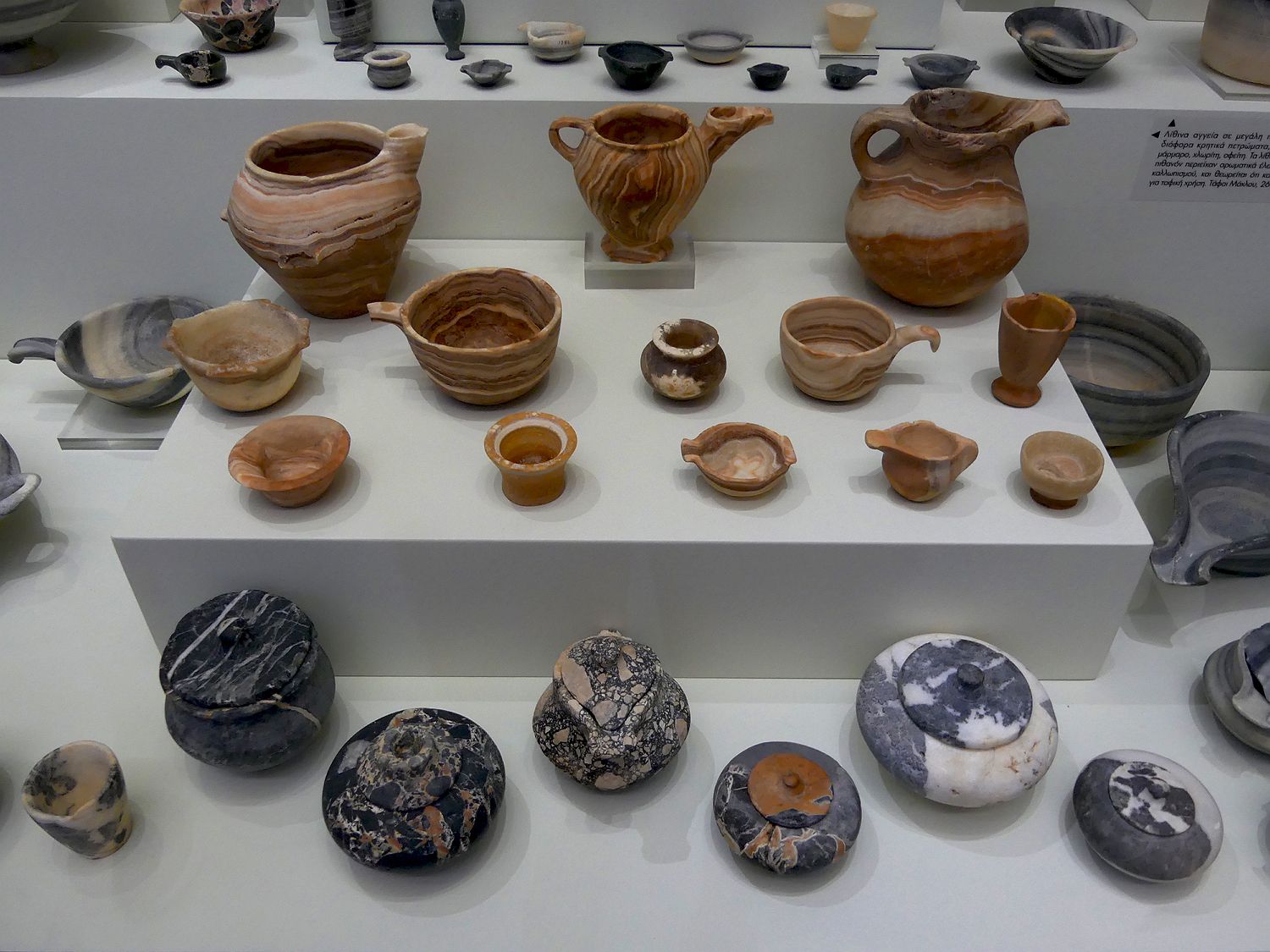
stone vessels
-
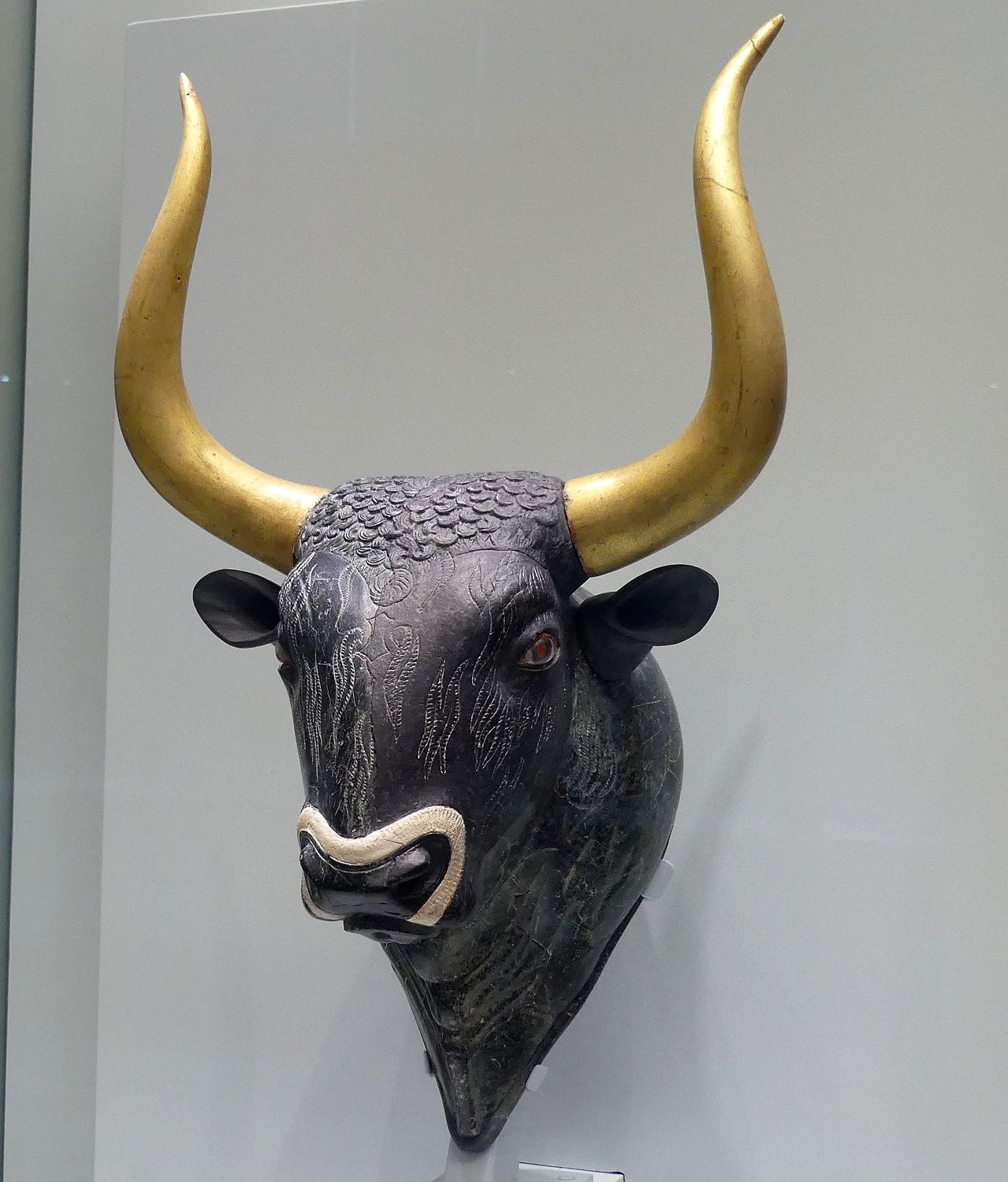
Bull head
-
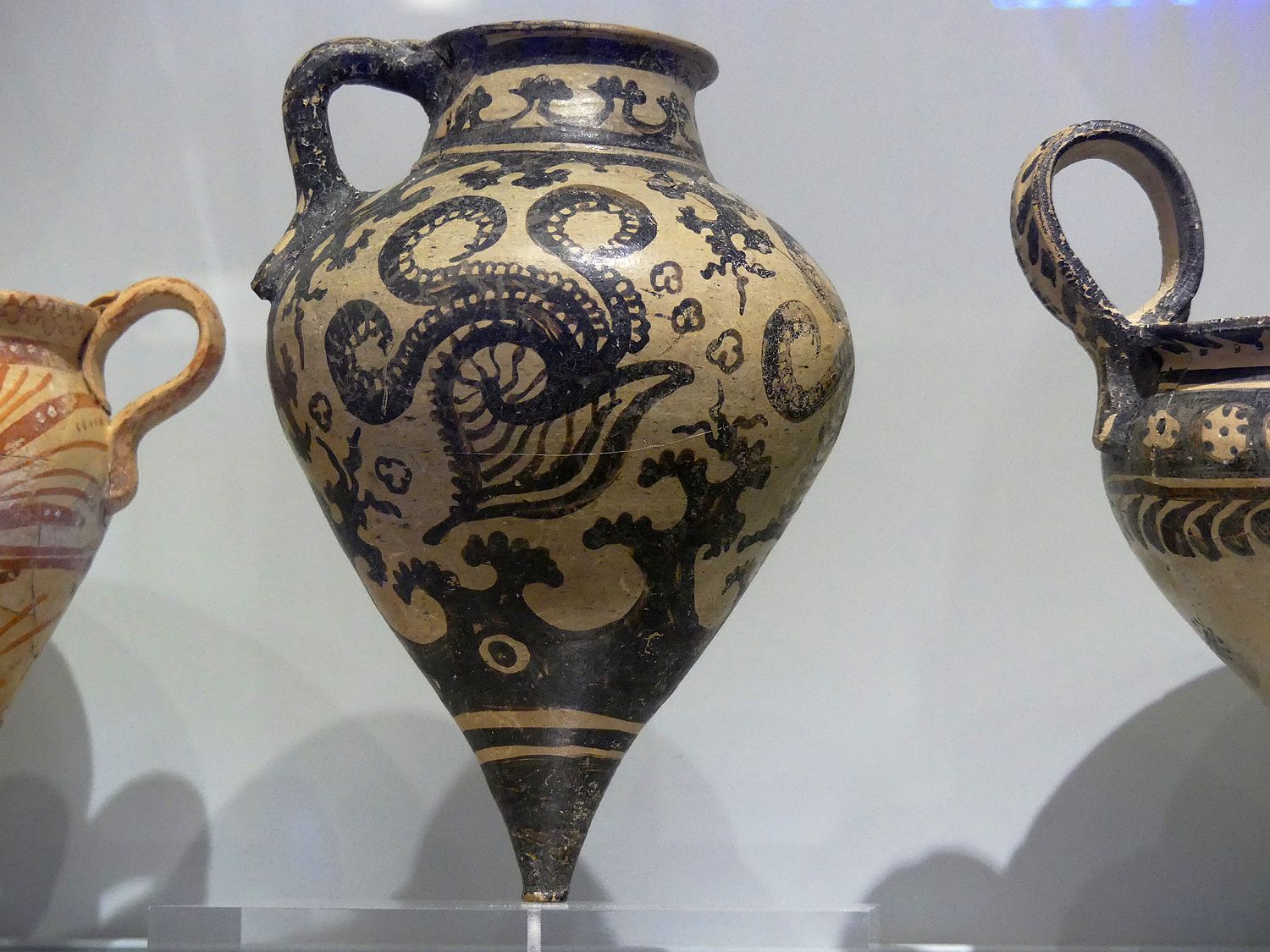
vase with nautilus and other marine animals
-
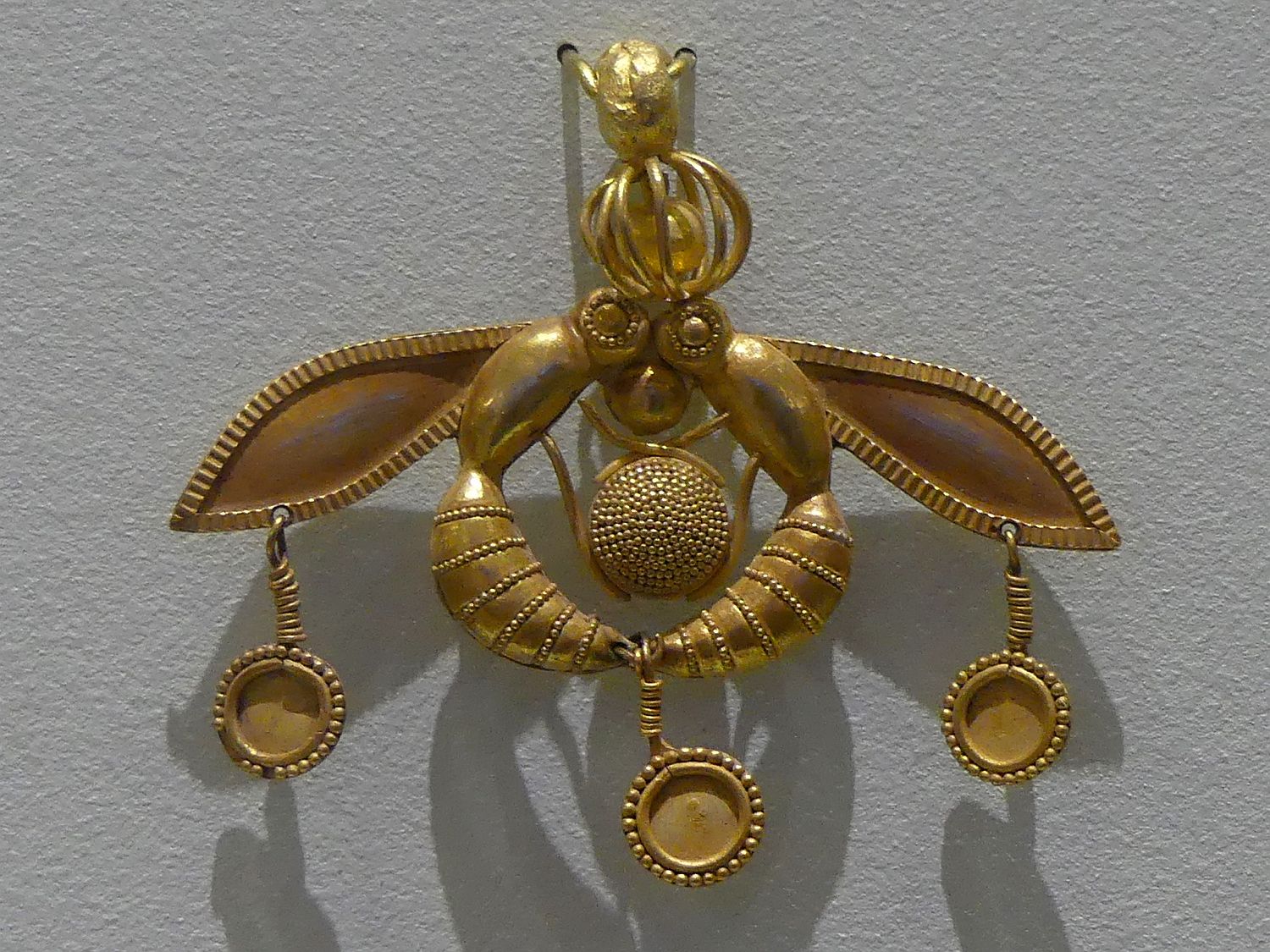
the famous Malia Pendant
-
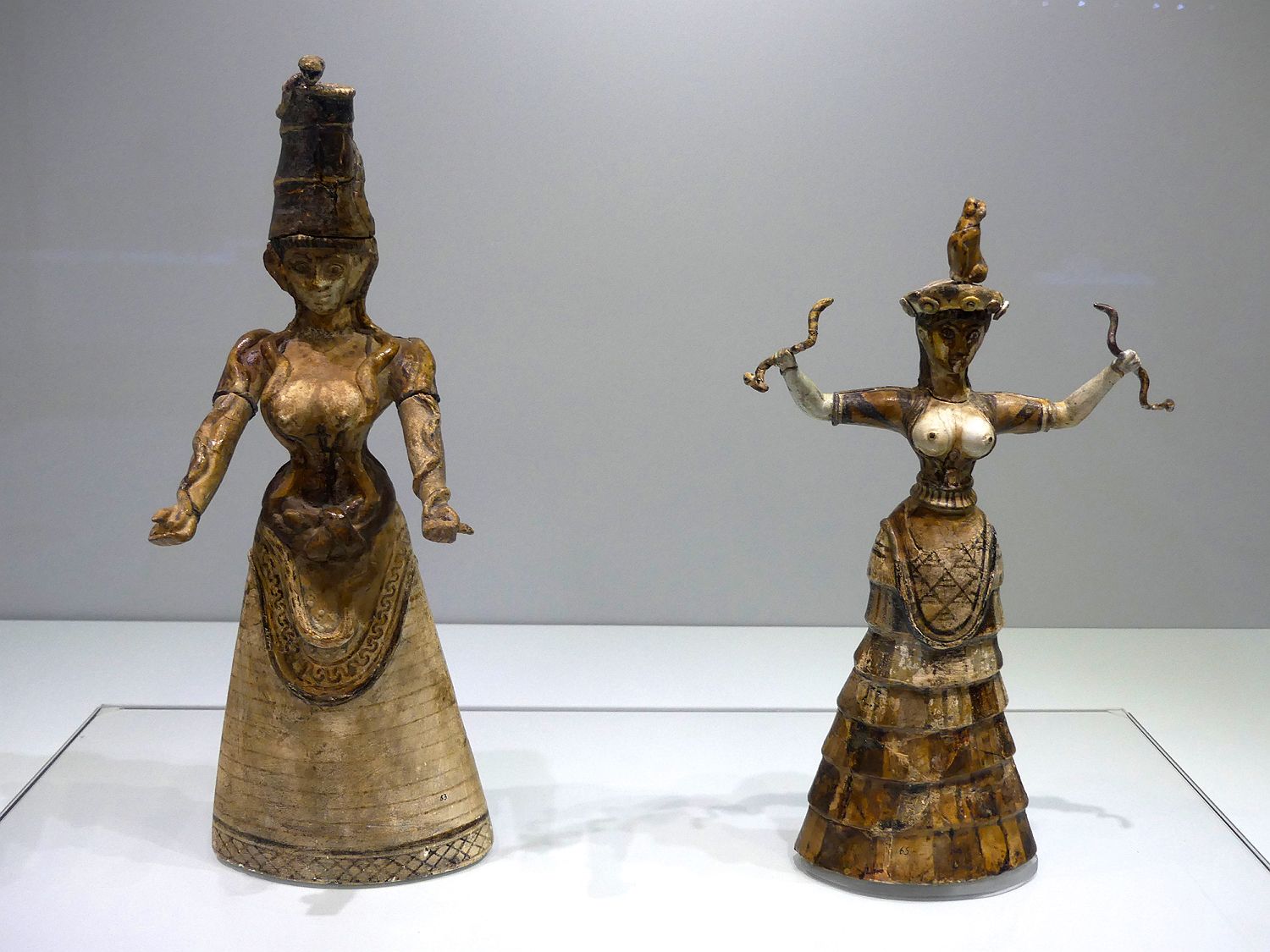
the Snake Goddesses
-
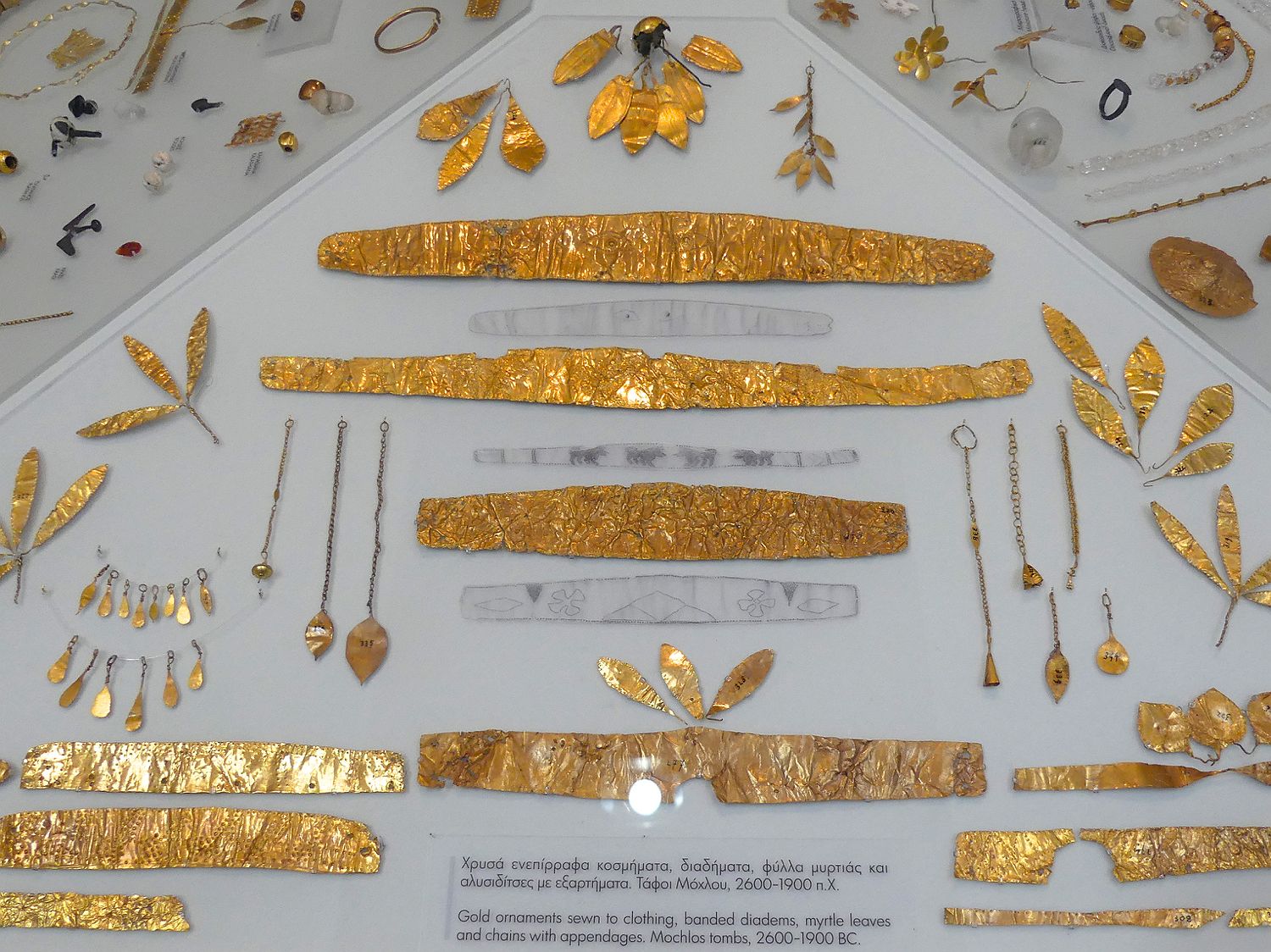
gold jewellery
-
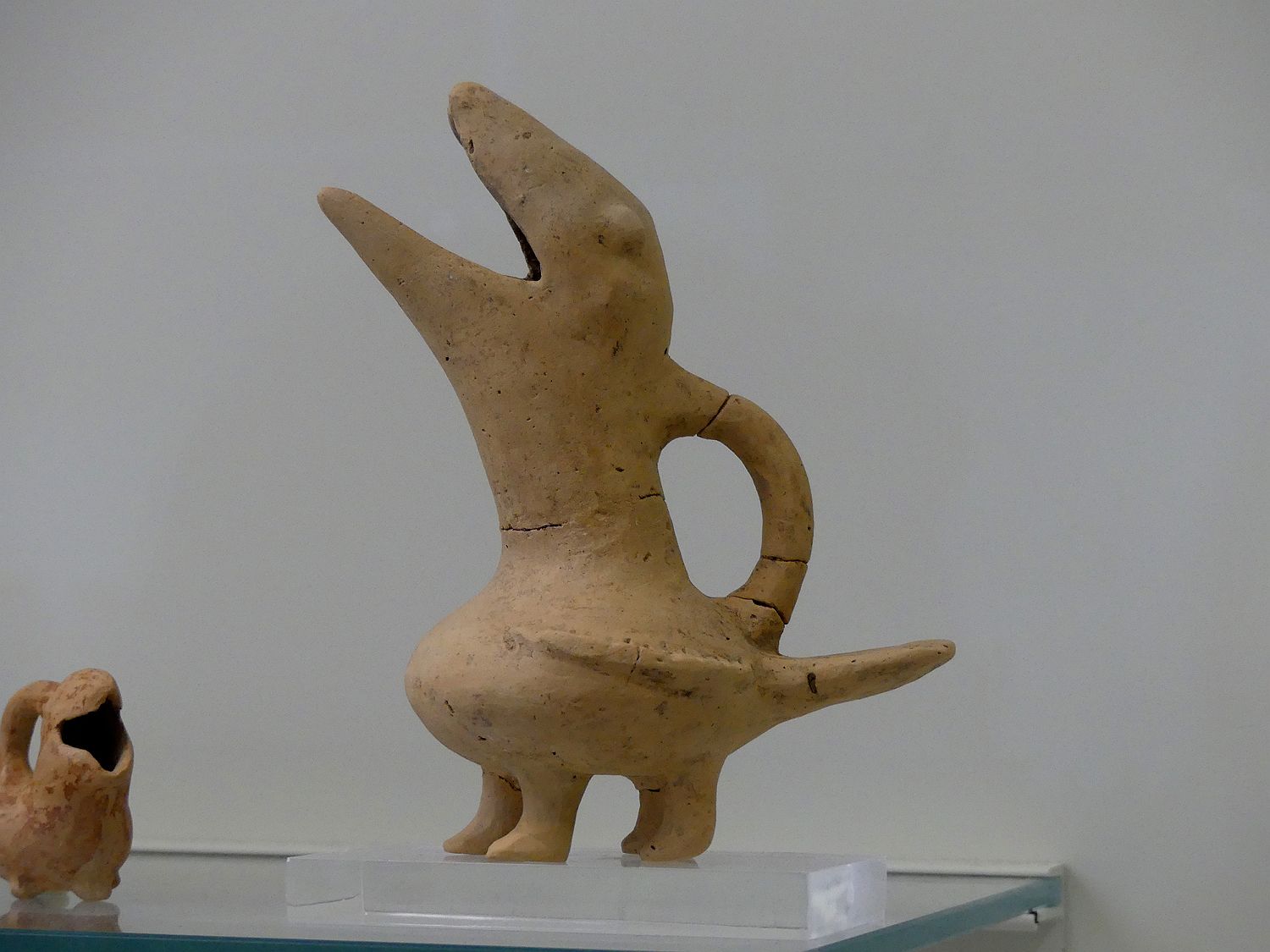
animal shaped clay vessel
-

finely decorated seal ring
-
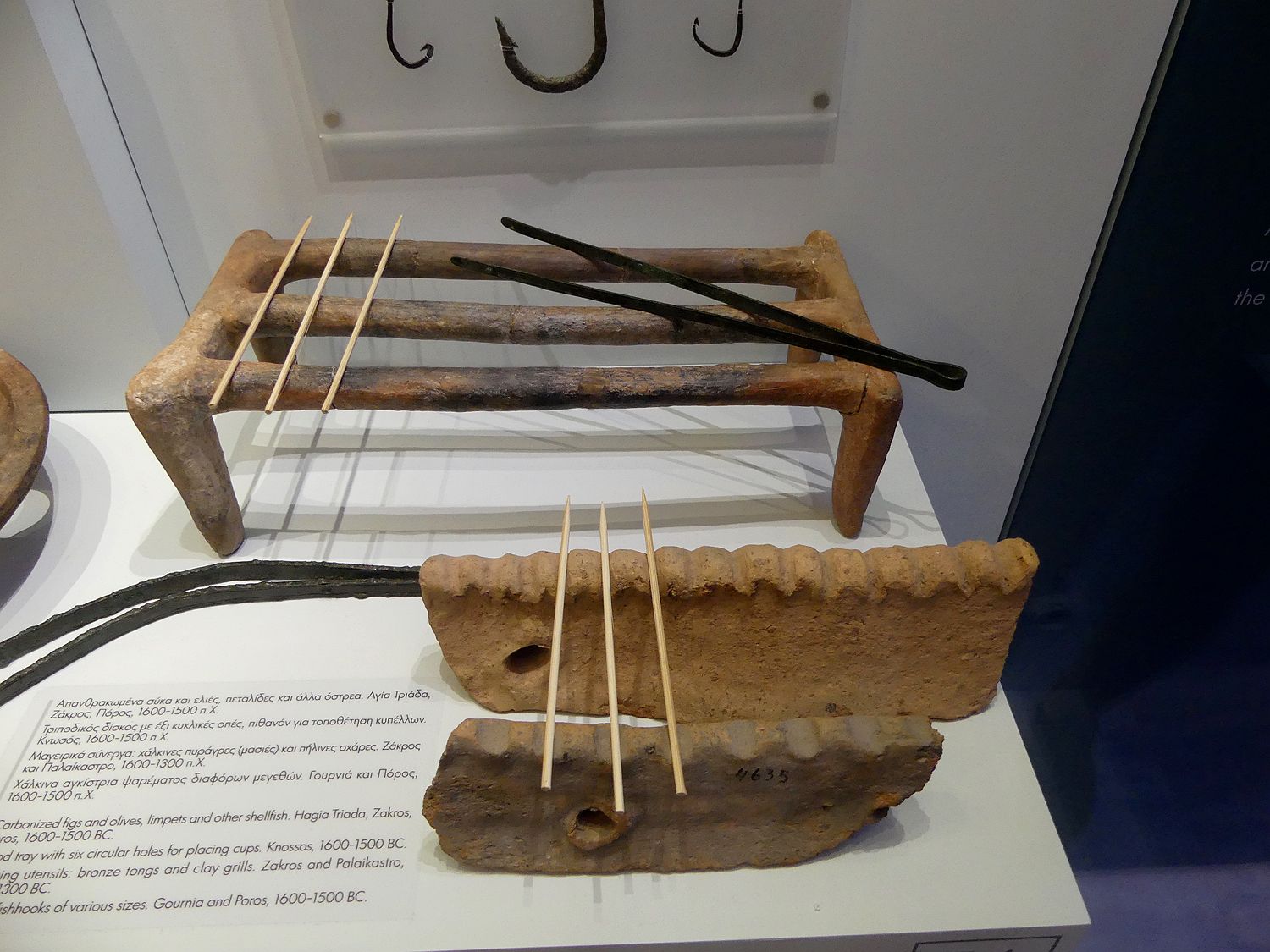
device for grilling the famous Greek souvlákia
-

Bull-leaping fresco
Here a few pictures from the amazing Museum in Heraklion with astounding astrifacts from the Minoan epoch.
The Minoan epoch in the Cyclades
In the Cyclades, a cultural development to such a high degree as in Crete was probably not possible due to the limited size of the islands: The small Cycladic Islands simply did not offer enough space for a sufficient population to create such a highly developed and differentiated society. Moreover, Crete’s contact with neighbouring Egypt probably played an important role in the development of the Minoan culture. For a long time very little was known about the Middle Bronze age in the Cyclades, so that it was assumed that a significant break occurred at the end of the Early Bronze Age with the collapse of the Cycladic culture, accompanied by a radical decline of the population. This was interpreted as the consequence of a subjugation of the Cyclades by the Minoans. Today, however, we know that this picture is not correct: Twenty settlements from the Middle Bronze age have been located in the Cyclades, even slightly more than the Early Bronze age settlements. However, only three of them have been excavated so far, so that our picture is still very incomplete. In comparison to the previous epoch, the settlements in the Minoan epoch became much larger, and in Phylakopi on Milos we find the first real city. Interestingly enough, the settlements known so far are very different from each other: Each has its own style and shows different relations to the neighbouring peoples. In contrast to the situation on Crete with its large, rich palaces, none of the settlements of the Cyclades shows a clearly distinguishable residence of a ruler: All inhabitants of the settlements still seem to have been more or less equal, and there was no aristocracy. The well-known settlement Akrotiri on Santorini, the closest settlement to Crete, belongs to the Late Bronze age, but its beginnings date back to the Middle Bronze Age. In the large, well organized and (presumably through an extensive trade) very prosperous settlement a clear Minoan influence can be recognized, although the settlement cannot be called “Minoan” either, since it has its own distinct style. The Minoan influence on Milos is less pronounced; and Minoan and Mycenaean pottery were found in nearly equal proportions on Kea (northwestern Cyclades) in addition to local pottery. Compared to the Early Bronze age a clear progress can be noted in the Cyclades, especially in pottery, since the potter’s wheel was invented, which enabled a rich development with many different, carefully crafted vessel shapes. The painting becomes richer and freer, and depictions of plants and animals become common, especially with birds and strange dragon-like monsters (Phylakopi).The Minoan epoch on Naxos
On Naxos there are only a few sites that can be dated to the Minoan epoch; our knowledge is still very incomplete. At the site of today’s Chóra an important settlement existed in the Minoan Epoch just as before and after. The pottery found in the excavations is partly made in local Cycladic style, partly in Minoan and in (continental) Helladic style. The rather few Minoan finds prove that a contact to Crete existed, but they hardly suggest a Minoan rule. Overall, the finds of the Middle Bronze age on Naxos are (so far) too sparse to allow a clear assessment of the situation. Possibly the rather lesser importance of the island of Naxos during the Minoan epoch can be attributed to the fact that the most important sea route during this time ran from the Greek mainland to Crete, i.e. not touching Naxos, but the western Cyclades such as Kea and Milos, which actually showed a remarkable bloom at the same time.The end of the Minoan epoch on Crete
About 1,600 BC a severe earthquake damaged most palaces on Crete. This was probably caused by the eruption of the volcano on Santorini, which also destroyed the settlement there. However, the Cretan palaces were rebuilt, so that the Minoan culture was not ended by the volcanic eruption, although it was certainly weakened. The final destruction of most Cretan palaces took place more than 100 years later around 1,430 BC. At this time the island was conquered by the Mycenaeans, who attacked Crete from the Greek mainland and soon overwhelmed it. All the palaces were destroyed except that of Knossós, which seems to have been used by the Mycenaean as residence and seat of power. In the following time Crete lost its importance in the Aegean, and Mycenaean elements displaced the Minoan culture. Finally, around 1,150 BC, the Bronze age came to an end and the Mycenaean culture, which encompassed the entire Greek mainland, the Aegean islands and Crete, was replaced by the Geometric culture.continue: The Mycenaean epoch
see also:
further reading: